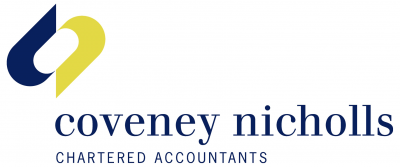The financial statements of a construction company are incredibly important financial documents that provide valuable insights into its financial health and help business leaders make better informed decisions.
However, financial statements can also be complicated documents that are difficult to read. But after reading this blog, you’ll be able to digest yours and understand what they tell you about your business.
What are financial statements?
Financial statements are reports that provide information about your company’s performance and financial health — information that will help you make good business decisions.
There are three types of statements:
- balance sheet
- profit and loss account
- cashflow statement.
Limited companies legally have to produce a balance sheet and profit and loss account when they file their company accounts at the end of the financial year; sole traders do not.
It’s not just a compliance exercise, though — if you’re looking for investment, lenders and investors will usually want to see your financial statements before committing their money to you.
Balance sheet
The balance sheet provides a summary of your assets and liabilities to give the equity of the business at a particular point in time, usually at the end of a quarter or year.
To explain in more detail, assets are items that the business owns or controls that have the potential to produce income or other benefits. Money that parties owe you are classed as assets.
Accounting standards require you to separate long term, or non-current assets from short term assets — construction tools or a motor vehicle is a long term asset, while construction materials would be short term ones.
Liabilities, meanwhile, refers to your obligation to transfer cash or services that you owe. In other words, it’s the debts you owe. Again, you have to separate non-current and current liabilities in the balance sheet.
By deducting your liabilities from your assets, you arrive at your business’s equity — the amount of money that could be returned to a company shareholders if all its assets were sold and debts paid off.
Have positive equity? Your investors have a safety net if things go wrong and will be more willing to invest. Have negative equity? You might need to focus on paying off some of your liabilities.
Profit and loss account
A profit and loss account is an account that shows gross and net profit or loss during a certain time period, usually a month, quarter or year.
You can work out your profit or loss by deducting your expenses (all the costs of running your organisation) from your total income (all the money received from sales of goods and services). That’s simple enough.
However, what is a little more complicated is the accruals principle, which is an accounting concept that requires transactions to be recorded in the time period in which they occur, regardless of when the money actually entered or left your business.
It’s important to follow the accruals principle not only to keep compliant with generally accepted accounting principles, but also to get a more accurate picture of your business’s financial activities.
Cashflow statement
Although not a legal requirement, cashflow statements help businesses monitor their cash inflows and outflows.
Cashflow statements are particularly useful for forecasting, which involves using past data to predict future cashflow, tweaked for certain assumptions, such as seasonal changes.
Understanding your financial statements
It’s essential to be able to make sense of your financial statements so you can take action right away when you spot a problem. It also helps you and your accountant get on the same page to create in-depth business plans.
However, we’ve only covered the basics of the financial statements of a construction company, so if you want to get down to the details get in touch with us today.

